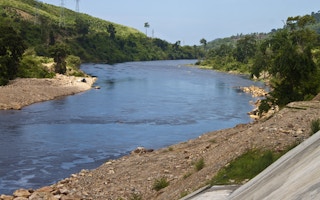The collapse of the Xepian-Xe Nam hydropower dam in Sanamxay district of Attapeu Province, Lao PDR on July 23 is a major tragedy that took the lives of at least 34 Laotians, with at least 100 more still missing and thousands displaced.
Some 50 days on, this disaster has come under intense scrutiny in part because the link between the causes of the disaster, human actions and development decisions are so clearly visible. Although the area experienced heavy monsoon rains in the weeks leading up to the flood, an inundation of this speed and scale was clearly driven by the dam failure.
Yet a key unanswered question remains: was this a failure to plan and account for ‘extreme’ monsoon rain events, or a failure of dam-building implementation?
Many will say that hindsight is 20/20 in the wake of such events. However, with sufficient consideration of trade-offs in energy policy and hydropower development decision-making, and foresight of the risks to local communities, similar tragedies along the Mekong river might be avoided.
Adopting such approaches is vital in an area where dozens more hydropower dams are planned or already under construction.
“
To prevent existing and future hydropower development from increasing disaster and climate risks, we must first re-imagine and effect change in today’s deeply entrenched decision-making and governance structures.
Sustainable development is imperative for reducing disaster and climate change risks, including floods. Climate change is expected to increase flood disaster and frequency, while hydropower is seen as a ‘clean energy’ solution to reducing greenhouse gas emissions and mitigating climate change.
Developing hydropower-driven electricity generation capacity will undoubtedly bring national-level economic benefits to Lao PDR. But many on-going large-scale hydropower projects are having negative consequences on people through community relocation and loss of livelihoods, as well as on the environment through destruction of ecosystems, leading to a decrease in freshwater and riparian biodiversity.
Environmental and social impacts that increase disaster risks for local communities are the expense, or ‘collateral damage’ of power generation, energy security and profit.
‘Battery to Southeast Asia’
Along the Mekong river and its tributaries, particularly in Lao PDR, the dams planned to enable the nation to serve as the ‘battery to Southeast Asia’ will dramatically increase disaster risks for the millions of people that live within the river basin and rely on its waters for their livelihoods and a sense of place.
Trade-offs in decision-making are common but their effects on outcomes are often overlooked. For example, making quick decisions to move a project forward comes at the expense of public consultation and diverse input. To developers, giving those that will be impacted by projects a strong voice might risk the project’s feasibility and profitability, leaving important perspectives—particularly those from women, left out.
While participation alone is not enough to prevent disasters and dam failures, meaningful public participation in planning must be recognized as an important facet of risk reduction and impact mitigation.
A related challenge is enacting a planning process that is thorough and holistic, and will lead to sustainable development outcomes. Comprehensive environmental impact assessments take time, resources and expertise, while project developers are often pushing to rush through the planning and approval process to be able to break ground on site.
Protecting people and nature
Hydropower development is a long-term investment designed to produce electricity for decades to come. Planning and environmental and social impact mitigation, in addition to disaster risk reduction efforts, all deserve comparable time consideration.
To prevent existing and future hydropower development from increasing disaster and climate risks, we must first re-imagine and effect change in today’s deeply entrenched decision-making and governance structures.
Those in power must give stronger voices to the marginalized, and greater protection to the Mekong’s natural flood defences that have been drastically altered in recent decades. These changes would represent a necessary transformation to protect and support the millions of people living along the Mekong against major flood risk.
Early signs of such a re-think by the Lao government are promising, but solutions have to go beyond ‘better infrastructure’ and instead give greater attention and priority to the risks placed on the backs of local communities; people that are often framed as ‘standing in the way of large-scale development’.
The disaster in Lao PDR might yet act as a watershed moment in the future development of energy systems in the region.
Michael Boyland is a research associate and Heidi Tuhkanen is a senior expert at the Stockholm Environment Institute (SEI). This story was published with permission from Thomson Reuters Foundation, the charitable arm of Thomson Reuters, that covers humanitarian news, climate change, resilience, women’s rights, trafficking and property rights. Visit http://news.trust.org/



















